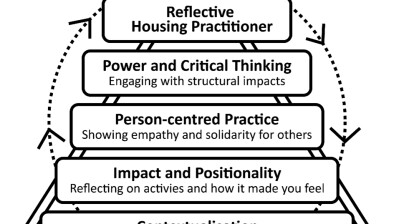David Scott: Building Safety Levy — What is it and is it coming to Scotland?

David Scott
With a consultation now underway about a similar post-Grenfell Building Safety Levy to one introduced to impose a levy on certain new builds in England, Ledingham Chalmers LLP partner David Scott looks at what might happen north of the border.
After the Grenfell Tower fire in 2017, the UK Government started looking at ways to pay for necessary works to remedy unsafe cladding on residential buildings.
The Building Safety Act 2022 in England introduced powers to impose a levy on certain new residential buildings. Subsequently, a consultation was carried out last year, with results published recently on how that might work.
Now, the Scottish Government has launched its own consultation, inviting views in relation to a levy in Scotland.
This raises interesting points of law not only in terms of the introduction of the proposed levy, but, more fundamentally, around the Scottish Government’s tax-raising powers.
THE BACKGROUND AND CONSULTATION
Following Grenfell, some housebuilders signed up to a voluntary scheme to support the removal of unsafe cladding from residential buildings.
However, in 2021 the UK Government announced proposals for the Building Safety Levy in England as a way to fund repairs on unsafe buildings, looking to ensure the housing sector makes a fair contribution towards those costs. The aim is that building firms, rather than occupiers or taxpayers, pay for fixing historic building safety defects as part of the building control process.
Questions remain whether the rates can be adjusted, depending on where in the country the building is, and whether certain buildings, such as affordable homes, NHS facilities, children’s homes and refuges should be exempt.
What looks likely from the initial consultation is that:
- the levy would be charged on a square metre basis
- a differential geographic levy rate will be applied based on local authority boundaries, and average area house prices
- a 50% levy rate will be applied to developments built on previously developed land
- developments of fewer than 10 units will be excluded
- developers will have to pay the levy before the building control completion certificate is issued
The UK Government aims to raise £3 billion through the levy to cover remediation costs in England, which it anticipates will take around a decade. The proposals there are out for further consultation and there is no indication when developers will have to start paying the rates.
THE PICTURE IN SCOTLAND
Rather than extend the powers under the 2022 act north of the border, the Scottish Government has announced it’s looking to transfer tax-raising powers from the UK Government to create an equivalent tax here.
A Scottish levy would ensure monies raised in Scotland were calculated on the basis of the scale of the issue here, and would be spent in this country.
Only once the constitutional issues have been resolved will the Scottish Government will look at the detail of the proposed levy; however, it is likely it will reflect the English proposals including seeking a contribution based on the square metre size of the proposed development and payable in advance of the building warrant completion certificate being issued.
There is no indication of whether the sums involved will match those in England.
That may depend on other matters including the amount the Scottish Government calculates it will cost to remedy historic dangerous cladding on residential buildings, and how long it’ll take to complete this work.
Whether there will be similar exceptions remains to be seen. That said, this is another cost housebuilders will have to be aware of and factor into development appraisals in future.
You can read the Scottish consultation here and submit responses to BSLdevolutionconsultation@hmtreasury.gov.uk.








